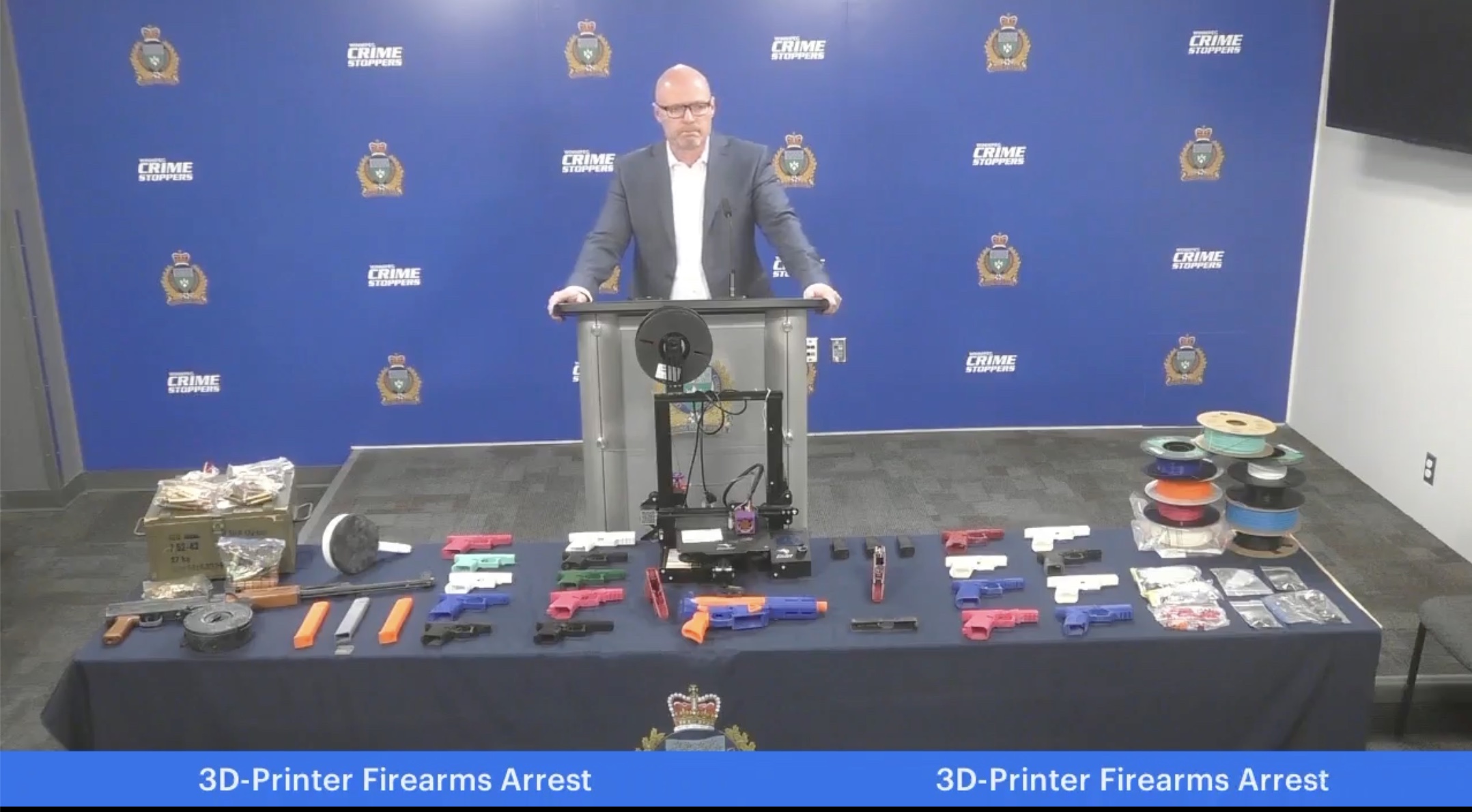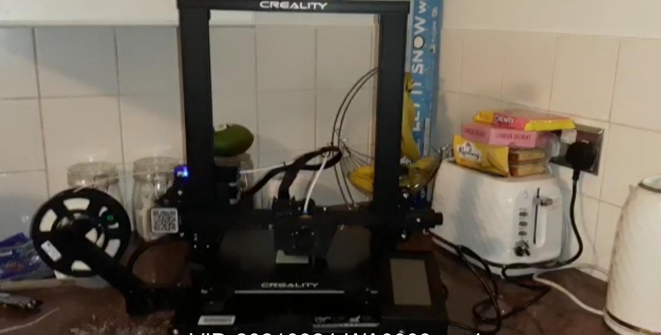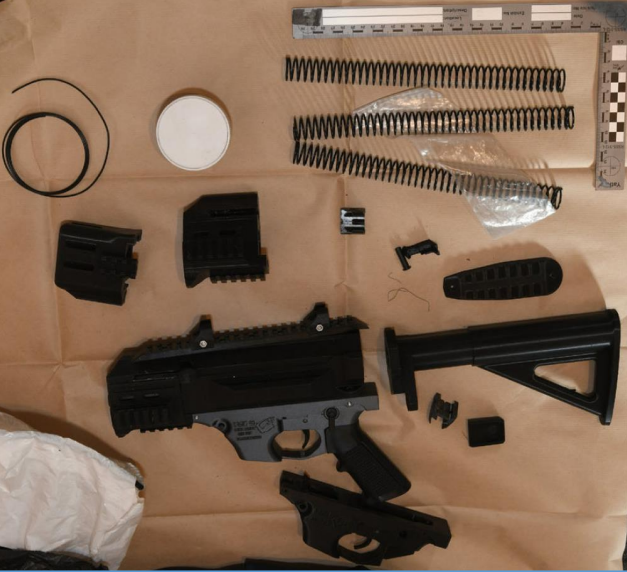Recent incidents involving 3D printed firearms have underscored the growing concern over the illegal production and distribution of these ghost weapons. In the Canadian city of Winnipeg, a man was accused of participating in a criminal partnership for manufacturing and selling 3D printed guns. Similarly, in Victoria, Australia, charges have been filed against an individual who possessed a cache of 3D printed firearms, weapons, and drugs. A Mississippi man received a federal prison sentence in the United States for producing semi-automatic guns using 3D printers. Finally, two men were imprisoned in West Yorkshire, England, for their involvement in a plot to manufacture and supply firearms made at home using a 3D printer.
According to officials involved in one of the cases, incidents like these highlight the need for law enforcement to address the illicit use of 3D printing technology in firearm production. The legal landscape surrounding 3D printed firearms varies across jurisdictions, with some countries strictly regulating or prohibiting their possession, manufacturing, or distribution, while others face challenges due to limited or unclear legislation in this area. Additionally, ghost guns, including 3D-printed firearms, pose a significant challenge to law enforcement and public safety due to their unserialized nature, making them difficult to trace.
Countries such as the United Kingdom and Japan have taken measures to ban the creation of unregistered firearms produced with 3D printers. However, the issue of homemade untraceable 3D printed guns or gun parts remains controversial. Governments and law enforcement agencies worldwide are grappling with this evolving technology, seeking to balance innovation, public safety, and preventing illegal activities related to 3D printed firearms.
Data from 3DPrint.com reveals a concerning trend, with a tripling of 3D printed gun arrests in less than two years. North America leads the arrest statistics, followed by Europe and Oceania. As recent cases of arrests, charges, and sentences continue to emerge, they contribute to a growing criminal niche. Here are more details about the latest 3D printed gun busts.
Printing Criminals
In March 2023, the Winnipeg Police Service Firearms Investigation and Enforcement Unit (FIEU) conducted a search warrant at a Winnipeg residence, resulting in significant seizures. Among the confiscated items were twenty partially assembled 3D printed Glock-style lower receivers, drugs, a 3D printed AR-15 style firearm designed to resemble a Nerf child’s toy, three 3D printed magazines, a 3D printed drum magazine, and a Creality Ender Pro Plus 3D printer with multiple filament spools. As part of the investigation, 18-year-old Jackson Prince was charged with nine offenses, including unauthorized possession of a firearm and two counts of weapons trafficking, but was subsequently granted bail.
During a recent media conference, Inspector Elton Hall from the organized crime division discussed the unique characteristics of the seized 3D printed receivers. He highlighted that they were durable, made with good-quality filament, and featured identifying markers that he called “marketing poise.” Notably, one of these markers is a “Gucci” logo found on the handgrip of some receivers. The detective appealed to the public for information regarding any blue, orange, or “Gucci”-logo 3D printed guns.
 Inspector Elton Hall discusses 3D printed firearms found in a case with media. Image courtesy of Winnipeg Police.
Inspector Elton Hall discusses 3D printed firearms found in a case with media. Image courtesy of Winnipeg Police.While 3D-printed receivers are currently legal in Canada, Hall expressed his desire for increased control over these items and said amendments are underway to prohibit the trafficking of plastic receivers, slides, and barrels. Hall emphasized that the demand for 3D printed guns primarily comes from gangs, trafficking networks, and organized crime elements in Winnipeg rather than law-abiding citizens.
“Very rarely, people like us are going on the street to spend thousands of dollars on 3D printed guns. These are crime guns and are going to the criminal element in Winnipeg,” said Hall.
In a direct message to potential criminals watching the press conference, Hall assured them of the police department’s capabilities in tracking 3D printed guns: “We are a fierce unit, our firearms analysis section is cutting edge in Canada, we spent a lot of money on this, and a lot of training.”
Busted: 3D Printed Firearms
In other news, a 27-year-old Torquay man was charged after 3D printed firearms were found among a stash of weapons and drugs at a home in Victoria. According to the Australian Associated Press, police searched a property in early May as part of an investigation into a non-fatal shooting that occurred earlier this year. During the operation, law enforcement uncovered five 3D printed firearms, a handgun, an imitation firearm, a silencer, and various illicit substances.
 Creality 3D printer in suspects’ kitchen. Image courtesy of West Yorkshire Police.
Creality 3D printer in suspects’ kitchen. Image courtesy of West Yorkshire Police.In another significant development, two men were sentenced to prison for their roles in a scheme to manufacture and distribute homemade firearms, also using a Crealty 3D printer, following raids conducted in the U.K. cities of Bradford and Hull last year. The case, believed to be the first of its kind, involved 41-year-old Sibusiso Moyo and 35-year-old Christopher Gill. During the police operation, homemade guns, ammunition, and gun-making equipment were discovered on a kitchen worktop and in a domestic garage. The weapons, described as hybrid 3D-printed guns with metal components, were intended for use within organized crime networks.
Further investigations by the Yorkshire and Humber Regional Organised Crime Unit (YH ROCU) unveiled two nearly complete semi-automatic 3D printed FGC9 carbines concealed in a holdall found in Gill’s loft. Additional evidence included various tools and parts, such as springs and screws, along with instructional materials and visual documentation illustrating the firearms at different stages of construction.
During the trial, compelling evidence was presented, including rigorous testing performed by forensic firearms experts from the Royal Armouries in Leeds, confirming the viability of the seized items as firearms. As a result, Moyo and Gill received sentences of 18 years and 13 years in prison, respectively. Furthermore, a close criminal associate was found guilty of distributing one of the functional FGC9 firearms containing eight live rounds of ammunition.
Following the sentencing, Senior Investigating Officer Andrew Howard of the YH ROCU emphasized that the “Manufacture of viable 3D printed firearms is a real threat and these firearms were built for one purpose only, to be supplied to other organized criminals who would use them to inflict harm.”
 Component parts for FGC9 3D printed weapon. Image courtesy of West Yorkshire Police.
Component parts for FGC9 3D printed weapon. Image courtesy of West Yorkshire Police.Caught
A Jackson, Mississippi felon was sentenced to 14 years in federal prison for using 3D printers to manufacture machine guns. According to a statement by the Bureau of Alcohol, Tobacco, Firearms and Explosives (ATF), ATF Special Agent Anthony Spotswood uncovered the felon’s activities in July last year through a confidential informant.
It was revealed that the individual, Kent Newhouse, was using 3D printers to create auto-sears, which are firearm components designed to convert semi-automatic firearms into fully automatic machine guns. Under federal law, auto-sears themselves are classified as machine guns. Upon executing a warrant, law enforcement discovered a cache of firearms and auto-sears at Newhouse’s residence.
Newhouse pleaded guilty on September 1, 2022, and U.S. Attorney Darren J. LaMarca prosecuted the case as part of Project Safe Neighborhoods (PSN). PSN is a collaborative program involving all levels of law enforcement and the communities they serve, aimed at reducing violent crime and gun violence.
Subscribe to Our Email Newsletter
Stay up-to-date on all the latest news from the 3D printing industry and receive information and offers from third party vendors.
Print Services
Upload your 3D Models and get them printed quickly and efficiently.
You May Also Like
3D Printing News Briefs, July 2, 2025: Copper Alloys, Defense Manufacturing, & More
We’re starting off with metals in today’s 3D Printing News Briefs, as Farsoon has unveiled a large-scale AM solution for copper alloys, and Meltio used its wire-laser metal solution to...
3DPOD 260: John Hart on VulcanForms, MIT, Desktop Metal and More
John Hart is a Professor at MIT; he´s also the director of the Laboratory for Manufacturing and Productivity as well as the director of the Center for Advanced Production Technologies....
3D Printing News Briefs, June 28, 2025: Defense Accelerator, Surgical Models, & More
In this weekend’s 3D Printing News Briefs, 3YOURMIND was selected to join an EU Defense Accelerator, and PTC has announced model-based definition (MBD) capabilities within Onshape. Finally, a study out...
EOS in India: AM’s Rising Star
EOS is doubling down on India. With a growing base of aerospace startups, new government policies, and a massive engineering workforce, India is quickly becoming one of the most important...

































